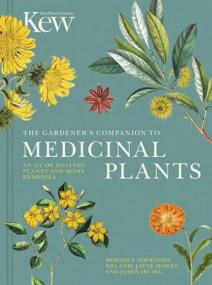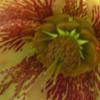
Sometimes a book comes along that is just a bit different to the everyday coffee table book on gardens and plants and The Gardener's Companion to Medicinal Plants is such a book.
It is strange but there is something in the book not having a glossy slip cover that makes it feel more grown up, more serious, containing information of substance. At the same time the delightful botanical illustrations hint that there will be all sorts of artistic joys to behold.
The premise for the book is simple as set out in the straightforward and matter of fact introduction - to give "gardeners an overview of plants used in traditional medicine". The gardener is not encouraged to go out and create a herbal garden based on the book but instead the enthusiast is reminded to consider 'right plant, right place' before investing any of the 277 plants included in the book. Nor is the book "a medical manual or a guide to self-diagnosis or self-treatment." Rather it is a book for the curious gardener and plant lover who wants to understand a little bit more and maybe try one of the simple recipes included.
Each plant is illustrated with a botanical drawing, has its Latin name and any common names, a brief description and then a description of traditional uses and a description of medicinal discoveries. So if you take Gardenia jasminoides as an example you learn that in Asia it is used to treat rheumatoid arthritis, to detoxify the blood, stop bleeding, and treat anxiety, agitation and depression. Under Medicinal Discoveries we learn that research is being carried out to see if the plant has any antidepressant effects. I find this particularly interesting as I am increasingly coming to a view that our dependence on synthetic drugs is not the way forward. Whilst in the West we lost our reliance on plants for primary health care during the 20th century, only now beginning to rediscover their possibilities, in Africa, South America and Asia plants still have a key role in primary health care. I frequently use calendar cream on burns, with no scaring, and often make a tincture of thyme for sore throats. I have friends who swear by Arnica for bruises and sprains and I really must get some for the medicine cupboard.
Of the 277 plants profiled in The Gardener's Companion to Medicinal Plants, there are 24 which have been particularly highlighted and a recipe included which you can try at home. I am quite taken with the Rosemary infused oil which is meant to be good for muscular problems and I love the idea of using plantains to make a balm to relieve the itching from bites, stings and nettle rash although having got rid of my lawn I'm not sure where I will find enough plantain.
It has been interesting leafing through the A-Z of the 277 plants spotting ones I have growing either intentionally or as weeds and seeing what I could use them for. It is also interesting to learn little facts about plants for example Solomon's Seal ( Polygonatum multiflorum) is said to be named after King Solomon as he discovered its wound-healing properties.
The book is published on behalf of the Royal Botanic Gardens Kew and understandable the authors are all connected to the botanic garden. Jason Irving is a forager and qualified herbalist, Dr Melanie-Jayne Howes is a phytochemist at Kew and Professor Monique Simmonds is Deputy Director of Science at Kew. Despite their obvious academic backgrounds they have struck an ideal balance between giving good information in an interesting and accessible way. The Gardener's Companion to Medicinal Plants is definitely a book that I will enjoy dipping into to and maybe trying some recipes from.

